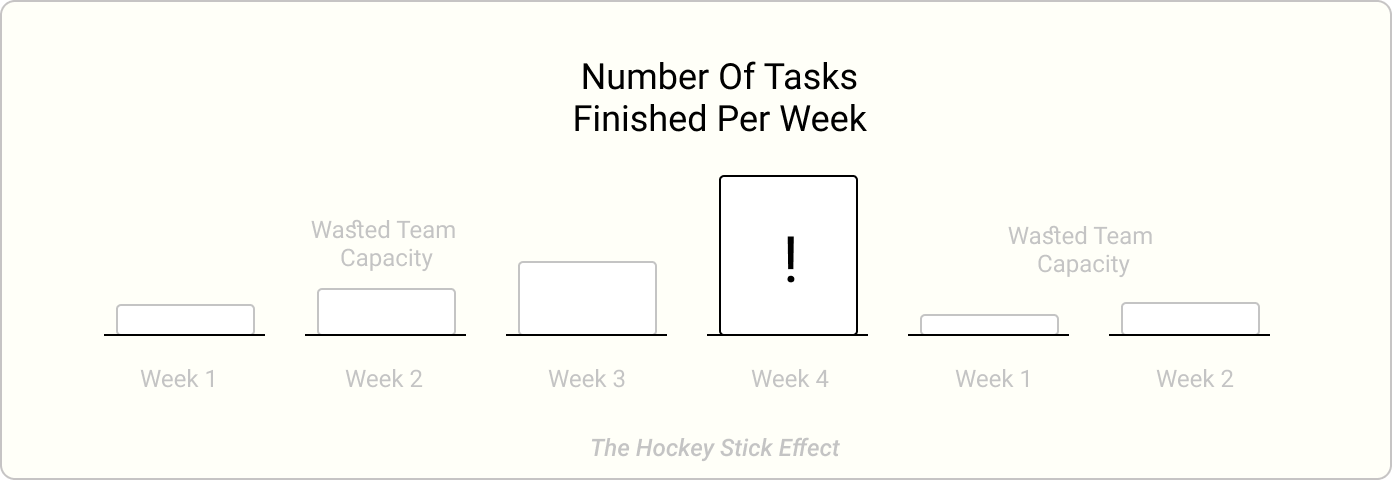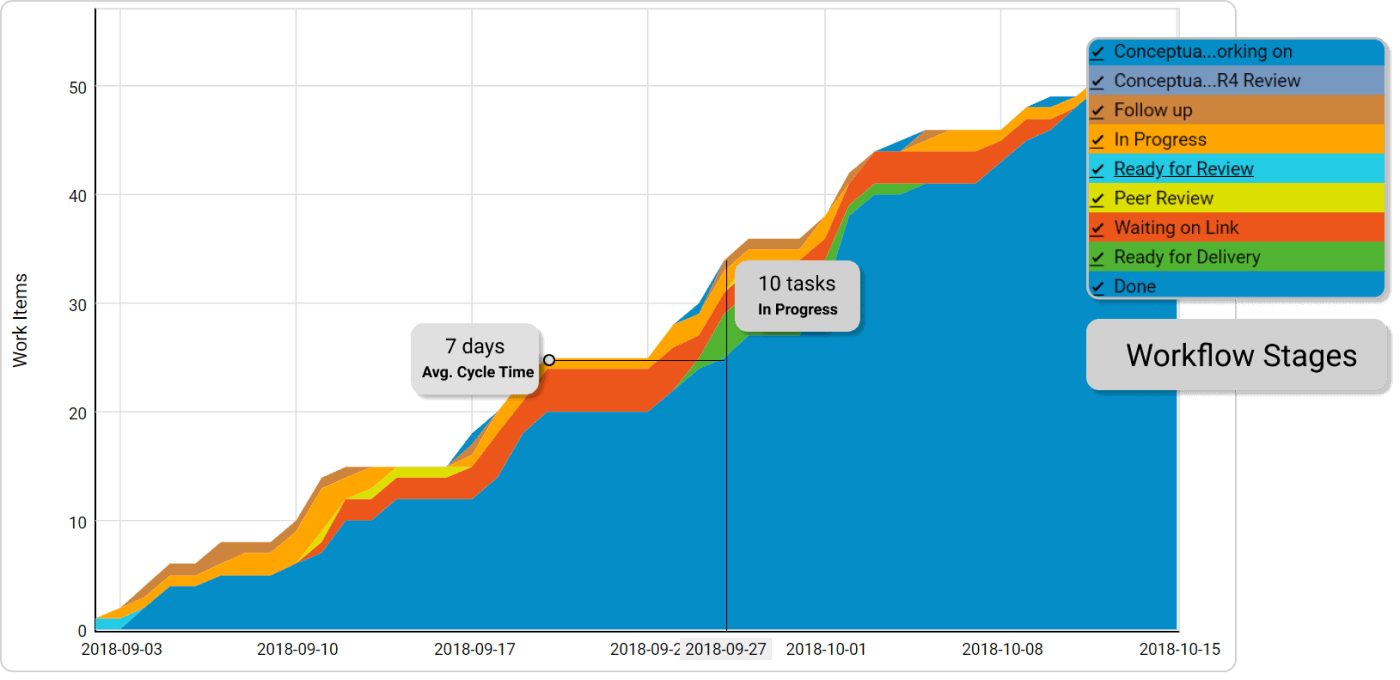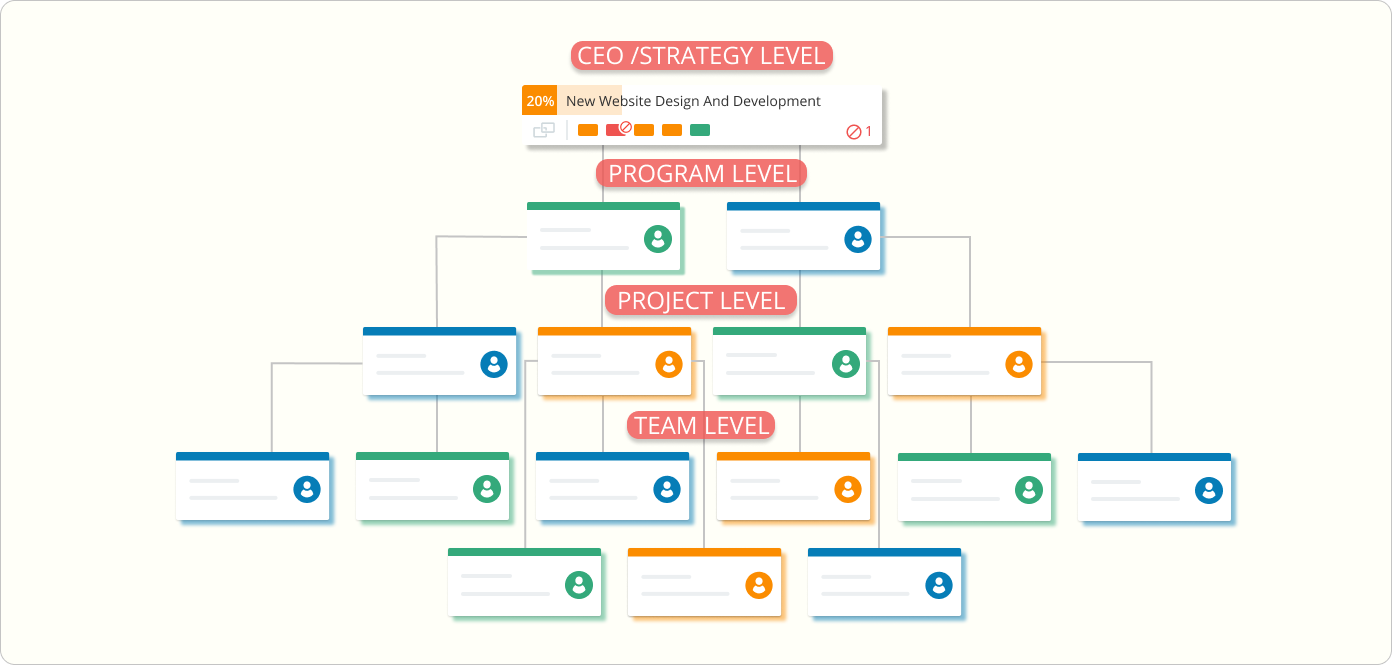Key Takeaways
-
What is Mura? Mura is one of the three core types of waste in Lean (alongside Muda and Muri) and refers to unevenness in workflows, workloads, or output.
-
Why does it matter? Mura disrupts flow, leads to inefficiency, burnout, and bottlenecks - even when individual teams appear to perform well.
-
What causes Mura? Overburdening, poor coordination, batch work, and the absence of workflow limits often lead to Mura.
-
How to fix Mura: Lean tools like Kanban boards, WIP limits, cumulative flow diagrams, and Portfolio Kanban help identify and level the workflow.
What Is Mura in Lean and Why Does It Matter?
In Lean management, Mura refers to unevenness in workloads, task distribution, production speed, or delivery timelines. It shows up when teams swing between periods of overwork and underuse, making processes unpredictable and unstable.
This matters because even if you're eliminating obvious inefficiencies (like rework or defects), failing to level your process creates hidden waste and stress. Mura can silently kill productivity, quality, and employee morale.
What Is an Example of Mura Waste?
A classic case of Mura is the "Hockey Stick Effect."
Let's say a team is running a 4-week sprint to deliver 10 features. In the first two weeks, progress is slow. Then, a realization hits: "We're behind!" Last week becomes a high-pressure sprint to finish everything. The team is overworked, stressed, and burned out - only to start the next sprint at a sluggish pace again.
This boom-and-bust cycle creates:
- Last-minute work rushes
- Quality issues due to fatigue
- Delays in handoffs to other teams

What Causes Mura and How Is It Different from Muda and Muri?
Let's quickly compare the three types of Lean waste:
| Waste Type |
Meaning |
Example |
Primary Impact |
| Muda |
Wasteful activities |
Rework, overproduction |
Wastes time, money, effort |
| Mura |
Unevenness in flow or work |
Workload spikes, unpredictable output |
Creates chaos, delays |
| Muri |
Overburden |
Pushing people/machines beyond capacity |
Causes burnout, breakdowns |
Mura is unique because it often stems from poor coordination. One team may work fast and efficiently - but still become a problem if the next team can't keep up.
How Can You Spot Mura in Your Process?
Here are two proven Lean tools to help you visualize and measure unevenness:
1. Kanban Boards
Map your process stages using Kanban boards and make work visible. You'll see:
- Where tasks are stuck
- Which stages get overloaded
- Where idle time exists
You can also set Work In Progress (WIP) limits to balance task distribution and prevent sudden spikes.
2. Cumulative Flow Diagrams (CFD)
These charts show how work progresses through each stage over time. Look for:
- Bands (representing workflow stages) that are widening indicate bottlenecks.
- Smooth, parallel bands indicate stable, balanced flow.
CFDs give you a data-driven view of Mura and show where process leveling is most needed.
 Analyzing work delivery using a Cumulative Flow diagram
Analyzing work delivery using a Cumulative Flow diagram
How to Fix Mura: From Teams to the Whole Organization
At the Team Level: Level Your Workflow
-
Visualize work with Kanban
-
Set WIP limits to reduce chaos
-
Encourage pull systems where team members start work only when ready
This ensures everyone operates at a steady pace and avoids last-minute scrambles.
At the Organizational Level: Use Portfolio Kanban
Even if teams work smoothly, Mura can appear between them. For example, imagine the following scenario:
- Dev team completes features quickly
- QA team gets overwhelmed
- Project delivery stalls
To address this, you can use Portfolio Kanban, which allows you to:
-
Connect multiple Kanban boards across teams
-
Track high-level initiatives down to team tasks
-
Set limits on initiatives to avoid flooding downstream teams
 Work breakdown using the Portfolio Kanban concept
Work breakdown using the Portfolio Kanban concept
How to Implement Process Leveling to Fix Mura
Process leveling, or Heijunka, is about distributing work evenly to avoid overloads or idle time. It is the exact Lean technique designed to counteract unevenness in workflows, delivery rates, or workload.
Steps to get started:
-
Visualize your end-to-end workflow with a value stream map
-
Identify bottlenecks using a cumulative flow diagram
-
Limit work in progress (WIP) by stage and team
-
Introduce cadence-based planning to synchronize team deliveries
-
Review and adjust regularly to account for capacity and demand changes
Why You Should Eliminate Mura
Mura is invisible until it's not - when stress, delays, and inefficiencies bubble to the surface. But by focusing on leveling your workflows, balancing capacity, and using Lean tools like Kanban and CFDs, you can tackle Mura head-on.
The result? A more stable, agile, and efficient delivery system that benefits your team - and delights your customers.
Businessmap is the most flexible software
to align work with company goals






 Analyzing work delivery using a Cumulative Flow diagram
Analyzing work delivery using a Cumulative Flow diagram Work breakdown using the Portfolio Kanban concept
Work breakdown using the Portfolio Kanban concept

